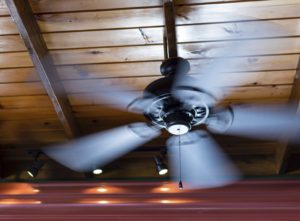What is the Correct Direction for a Ceiling Fan? And Other Common Home Energy Efficiency Questions
Air conditioners use about 5 percent of all the electricity produced in the United States, costing homeowners more than $11 billion annually. Thankfully, simple energy efficiency improvements around the house could save you money and as a bonus, help you feel more comfortable, too. For example, simply using the correct direction for a ceiling fan can save energy and take the entire family’s comfort levels from blah to ahhh….
Top Energy Efficiency Questions for Around the Home
Contents
What is the Correct Direction for A Ceiling Fan?
Flip the switch in one direction and you’ll push air down, the other direction will suck air up. So, what is the correct direction for a ceiling fan? In the summer months, spin the blades in a counterclockwise direction. The airflow created by the fan creates a wind-chill effect, making you “feel” cooler plus it also helps to pick up air from the air conditioning vents and circulate the cooler air throughout the room. For the wintertime, the blades should spin clockwise.
Should I Use a Fan in the Winter?
 Energy Star recommends that ceiling fans should be used both in the summer and winter months. In the winter months, reverse the motor and run your ceiling fan in the clockwise direction. This produces a gentle updraft, which forces warm air near the ceiling down into the occupied space. The air will naturally go down the walls and over the floor to be picked up again by the fan, balancing the temperature in the room.
Energy Star recommends that ceiling fans should be used both in the summer and winter months. In the winter months, reverse the motor and run your ceiling fan in the clockwise direction. This produces a gentle updraft, which forces warm air near the ceiling down into the occupied space. The air will naturally go down the walls and over the floor to be picked up again by the fan, balancing the temperature in the room.
Does the Speed of a Fan Matter?
When it comes to the speed of your fan, choose higher speed settings in the summer and lower speed settings for the winter. With warmer weather, you’ll definitely want to feel the air moving more to cool your body, so choose that high setting to experience the wind-chill effect. But in the cooler months, switch the speed to low so simply circulate the heated air in the room.
Take a look at “Our Top Five Energy Efficient Ceiling Fans” blog for a number of factors to take into consideration when selecting the right ceiling fan for of room in your home.
What is the Most Energy Efficient Temperature to Set my Thermostat?
When using your ceiling fan, you get to set your thermostat at a more efficient temperature — we recommend running your air conditioner at 78 degrees to maximize savings.
When Do I Need to Replace my HVAC?
Most central air conditioning units last about 20 years but around 12 years old, your air conditioning unit has passed its mid-life point. When replacing your central air conditioning unit, look for a SEER of at least 15 and ENERGY STAR rated. Replacing an old air conditioner unit with an energy efficient unit could save you 20-40 percent on home cooling costs and control humidity levels for the ultimate home comfort.
But, before you make a new air conditioner purchase, talk to the Point Bay Fuel technicians. We install and service all HVAC equipment for your home or place of business; call us today at (732) 349-5059.
